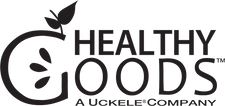There has never been a better time to detox.
Exposure to environmental toxins and xenoestrogens is more prevalent than ever. According to the CDC’s National Biomonitoring Program, more than 300 environmental chemicals, or their metabolites, are regularly found in human samples (e.g. urine, blood, serum, breast milk, and meconium), and many of the chemicals are linked to health problems such as cancer, autoimmune disorders, Parkinson's, Alzheimer's, autism, and troubles due to hormone disruption.
That said, few people are eager to embark on a restrictive cleansing regime. Don’t bother because doing a multiday detox diet once or twice a year and then being "off" it the other days of the year is just not sufficient enough. In fact, because the organs need nutrients to cleanse the body, fasting can do more harm than good. Extreme fasting can lead to protein and vitamin deficiencies, electrolyte imbalance, lactic acidosis and even death. We need a 21st century approach that looks at genetics involved in detoxification, environemental constraints, food, and how we live.
3 Phases of Liver Detoxification
During phase 1 detox, the liver takes toxic substances and converts them into intermediates. These intermediate toxins are often more toxic than before they were broken up, so it’s important they’re able to be managed.
Phase 2 makes the intermediate toxin easier to remove from the body. It kicks in as soon as the intermediate is formed, and converts it to a nontoxic form that can be excreted into bile and stool (fat-soluble) or urine (water-soluble).
Phase 3 is the actual removal of the toxins. Water-soluble substances go to the kidneys to be peed out, and fat-soluble substances are packaged into bile and eliminated via the stool. If you don’t produce one or more stools daily, you must resolve this before doing a focused detox or cleanse. Otherwise, it is not worth the collateral damage. You don’t want to push Phases 1 and 2 if Phase 3 isn’t working!
For a more in depth look at the three phases of liver detoxification, check out 3 Phases of Liver Detoxification You Must Know About.
Start With The Basics
It's important to eat foods that influence the two detoxification pathways and processes, along with the elimination phase. Specific vitamins, minerals and phytonutrients are all involved. First, start with the basics: eat a fiber-rich, organic diet with a copious amount of brightly colored fruits and vegetables, quality protein, balanced fats, herbs and spices, and minimize intake of refined carbs and sugars. For lifestyle factors involved in detoxifying, it's important to sweat (via a sauna), sleep enough, manage stress, and maintain positive relationships. Lifestyle factors also involve identifying and minimizing your exposure to toxins, heavy metals and xenoestrogens. Three major changes you could make to minimize exposure include using an air and water filter and avoiding plastic containers. Here's a list of the 12 worst hormone disruptors, how they damage your health, and how to avoid them.
For dietary supplements, taking supportive nutrients that target specific detox pathways and the organs' cleanup work is a start. A good multivitamin is a must.
Here are some top supplement choices to support detoxification:
Chlorella
This single-cell algae Chlorella pyrenoidosa is loaded with chlorophyll, a compound believed to cleanse the blood and keep the body from absorbing industrial toxins such as dioxins. Polysaccharides in the algae’s cell wall also have strong immune-supporting properties. One study of 35 pregnant Japanese women found that those who took chlorella supplements had significantly lower dioxin levels in their breast milk.
Dose: One scoop (2–3 grams) of chlorella or another chlorophyll-containing greens powder daily.
Spirulina and other chlorophyll-rich foods also ofter detoxification benefits.

